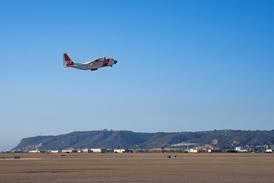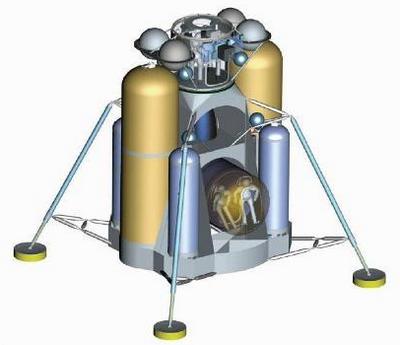The US space agency’s Lunar Architecture Team (LAT) concluded that it required 6,000kg (13,200lb) of cargo delivered to the Moon. But the LDAC-1 Lander provided less than 4,000kg, excluding the four astronauts it would take to the surface.
The project office had conducted the LDAC-1 from 28 April to 1 July this year and LDAC-2 was to have started by now, but since the end of November the project office has been working on LDAC-1-delta for the cargo-optimised lander.
|
|
|---|
NASA's LDAC-1 Lunar Lander sortie mission configuration design |
“Landers have to be moved or a new landing pad is needed every six months,” according to the in-situ resource utilization development and incorporation presentation given at NASA’s exploration systems mission directorate’s first technology exchange conference held on 14-15 November in Galveston, Texas.
NASA has also concluded that up to 252kg of hydrogen could be “scavenged” from the abandoned descent modules, and one option is for a habitat lander to be launched on an uncrewed mission.
Ongoing Lander studies are examining truss and panel construction alternatives for optimising descent module mass. Although NASA has been examining larger 10m (32.7ft) and 12m fairings for its Ares V cargo launch vehicle (CLV), the current concept of operations sees the Lander launched within the CLV’s 8.4m shroud.
The agency is also studying whether Lander structural panels should have an aluminium or titanium honeycomb core. And it is analysing Lander thermal management radiator development, identified as “a major task” because of issues with freezing at the outpost.
Described as “initial solutions” and not "baselined" designs, the Lander is to have a common descent stage powered by a single expander-cycle LOX/LH2 engine. That common stage would accommodate the cargo and crew versions.
The LOX/LH2 descent engine has been selected because of Ares V payload capability limitations if a heavier nitrogen tetroxide (NTO)/ monomethylhydrazine (MMH)-fuelled descent module had been used for the Lander.
For the ascent module, NTO/MMH and LOX/CH4 are still being considered. The LDAC-1 design assumed a combined main-propulsion/reaction-control system for ascent using either of these propellant combinations, but not both.
The current concept of operations sees the Lunar Lander launched without electrical power. Once in low Earth orbit the Lander is powered by the Earth departure stage (EDS). Once docked with the Orion crew exploration vehicle (CEV) this powers the Lander with 600W and, after the trans-lunar injection burn carried out by the EDS, the CEV power supply increases to 1.5kW. The Lander only finally powers itself 24h before lunar orbit injection.
Read more about NASA's Constellation plans at Flight technical reporter Rob Coppinger's Hyperbola blog
See images, not to be found on NASA's website, of the US space agency's Constellation vehicles that will send astronauts to the Moon and Mars at the airspace.aero Constellation gallery
Source: FlightGlobal.com
























